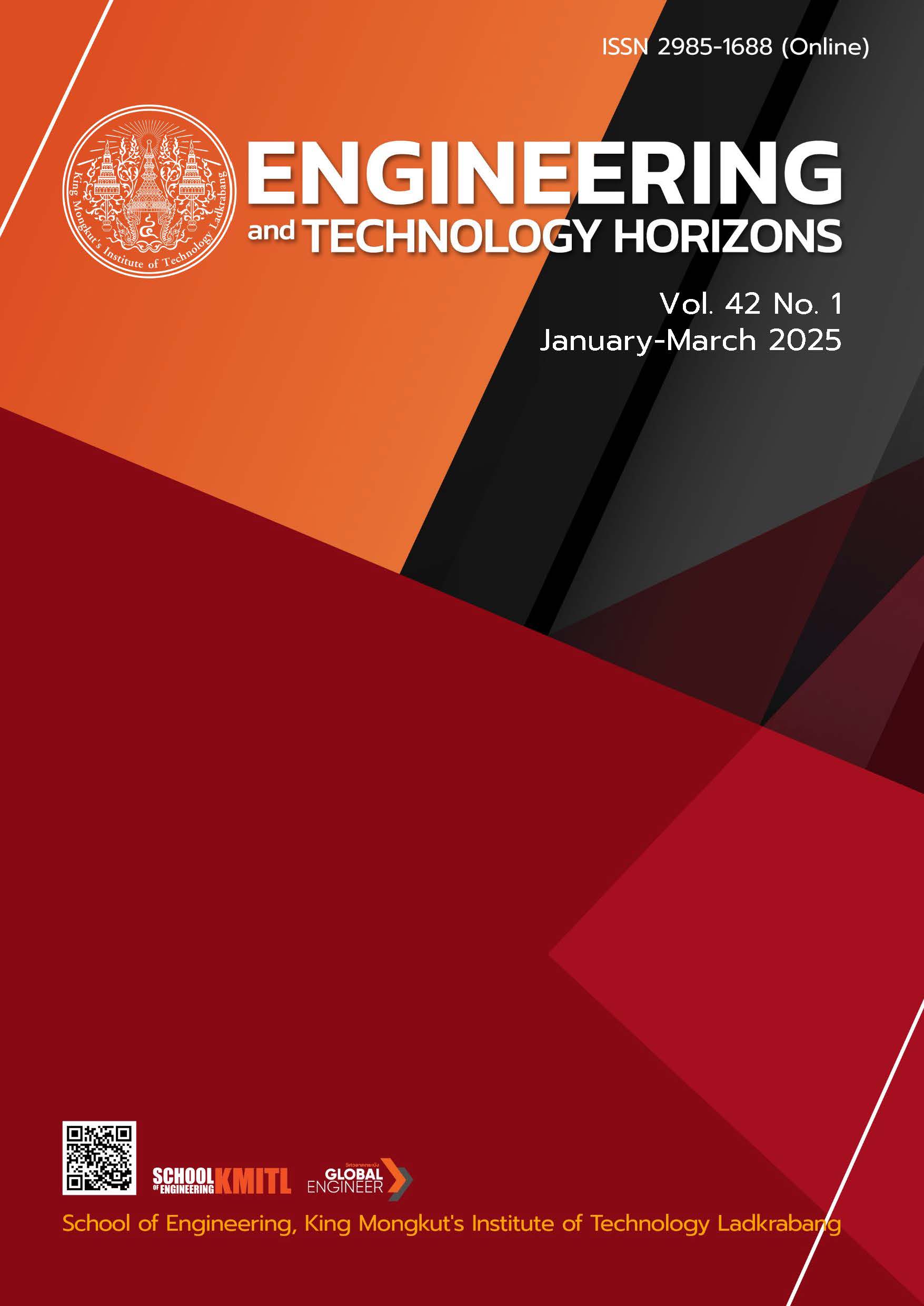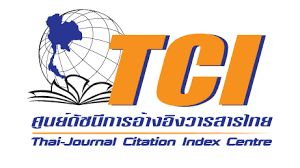Effects of residual particles and multiply charged particles of a polystyrene latex particle on the particle filtration efficiency of a medical face masks
DOI:
https://doi.org/10.55003/ETH.420103Keywords:
Residual particle, Multiply charged particle, Polystyrene latex particle, Filtration efficiency, RespiratorAbstract
The objective of this study is to elucidate the impact of residual particles and multiply charged particles of polystyrene latex (PSL) particles on the particle filtration efficiency of a medical face mask. Adhering to the ASTM F2299 test methodology, this investigation employed a PSL particle (Thermo ScientificTM Dri-CalTM) with a diameter of 100 nanometers and a geometric standard deviation of approximately 1.6%. The scanning mobility particle sizer (SMPS) was utilized to ascertain the size distribution of PSL particles both upstream and downstream of the test face mask, thereby determining the particle filtration efficiency of the face mask for residual particles and multiply charged particles at various PSL particle-to-DI water ratios. The PSL particle-to-DI water ratios employed in this study were 10, 20, and 100 drops per 200 mL, respectively. The findings revealed that PSL suspension residual particles with a mobility diameter less than 60 nanometers, as well as multiple charged particles with a mobility diameter exceeding 100 nanometers, introduced complexity to purportedly monodisperse particle aerosols. An increase in PSL suspension concentration resulted in a heightened relevance of the residual peak. At elevated concentrations, PSL multiply charged particles became discernible in the size distribution. Furthermore, it was demonstrated that as the PSL particle-to-DI water ratios increased, the particle filtration efficiency of the test face mask diminished for both single charged particles and multiply charged particles (+2, +3, +4, and +5).
References
K. O’Dowd, K. M. Nair, P. Forouzandeh, S. Mathew, J. Grant, R. Moran, J. Bartlett, J. Bird and S. C Pillai, “Face Masks and Respirators in the Fight against the COVID-19 Pandemic: A Review of Current Materials, Advances and Future Perspectives,” materials, vol. 13, no. 15, 2020, Art. no. 3363, doi: 10.3390/ma13153363.
C. M Dugdale and R. P. Walensky, “Filtration Efficiency, Effectiveness, and Availability of N95 Face Masks for COVID-19 Prevention,” JAMA Internal Medicine, vol. 180, no. 12, 2020, Art. no. 1612, doi: 10.1001/jamainternmed.2020.4218.
COVID - 19 situation report, Department of Disease Control Thailand, Aug. 2021. [Online]. Available: https://covid19.ddc.moph.go.th/.
P. Intra, “Filtration Efficiency of Surgical Masks, Fabric Masks and N95/KN95/FFP1/FFP2 Masks Available for Use during the COVID-19 Pandemic in Thailand,” Thai Science and Technology Journal, vol. 29, no. 5, pp. 904–918, 2021, doi: 10.14456/tstj.2021.76.
Standard Test Method: Determining the Initial Efficiency of Materials Used in Medical face masks to Penetration by Particulates Using Latex Spheres, ASTM F2299/F2299M-03, ASTM International, West Conshohocken, PA, USA, Feb. 16, 2024. [Online]. Available: https://www.astm.org/f2299_f2299m-03r17.html.
Standard Specification for Performance of Materials Used in Medical Face Masks, ASTM F2100-19e01, ASTM International, West Conshohocken, PA, USA, Dec. 8, 2020. [Online]. Available: https://www.astm.org/f2100-19e01.html.
W. John, “Size Distribution Characteristics of Aerosols,” in Aerosol Measurement: Principles, Techniques and Applications, P. Kulkarni, P. A. Baron and K. WILLEKE, Eds, 3rd ed. Hoboken, NJ, USA: John Wiley & Sons, Inc., 2011, ch. 4, sec.4.2, pp. 45–46.
S. H. R. A. Mazhar, “Relative Bio-Equivalence of Salbutamol MDIs Without and With the attached Spacers,” Ph.D. dissertation, School of Pharmacy and Medical Sci., Bradford Univ., Bradford, UK, 2018.
W. Yim, Cheng, S. H. Patel, R. Kou, Y. S. Meng and J. V. Jokerst, “KN95 and N95 Respirators Retain Filtration Efficiency despite a Loss of Dipole Charge during Decontamination,” ACS Applied Materials & Interfaces, vol. 12, no. 49, pp. 54473–54480, 2020, doi: 10.1021/acsami.0c17333.
S. Rengasamy, A, Miller and BC, Eimer, “Evaluation of the filtration performance of NIOSH - approved N95 filtering facepiece respirators by photometric and number - based test methods,” Journal of Occupational and Environmental Hygiene, vol. 8, no. 1, pp. 23–30, 2011, doi: 10.1080/15459624.2010.515556.
Downloads
Published
How to Cite
Issue
Section
License
Copyright (c) 2025 School of Engineering, King Mongkut’s Institute of Technology Ladkrabang

This work is licensed under a Creative Commons Attribution-NonCommercial-NoDerivatives 4.0 International License.
The published articles are copyrighted by the School of Engineering, King Mongkut's Institute of Technology Ladkrabang.
The statements contained in each article in this academic journal are the personal opinions of each author and are not related to King Mongkut's Institute of Technology Ladkrabang and other faculty members in the institute.
Responsibility for all elements of each article belongs to each author; If there are any mistakes, each author is solely responsible for his own articles.






